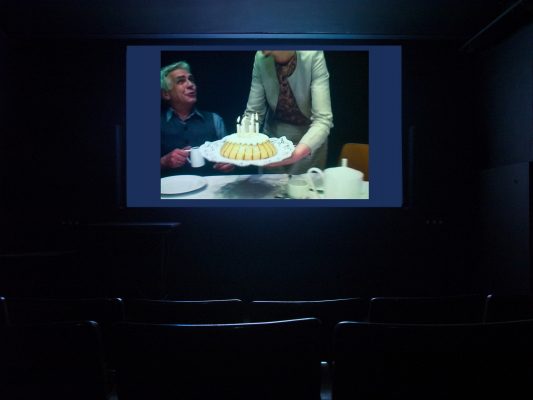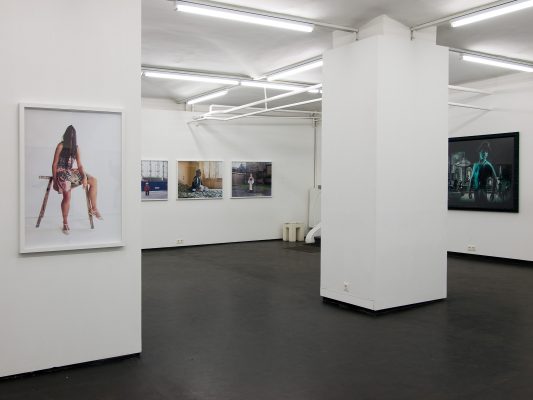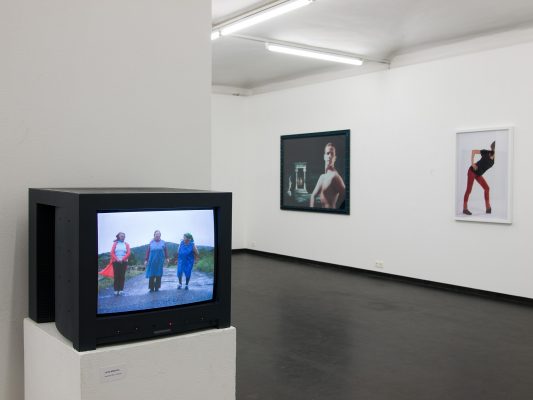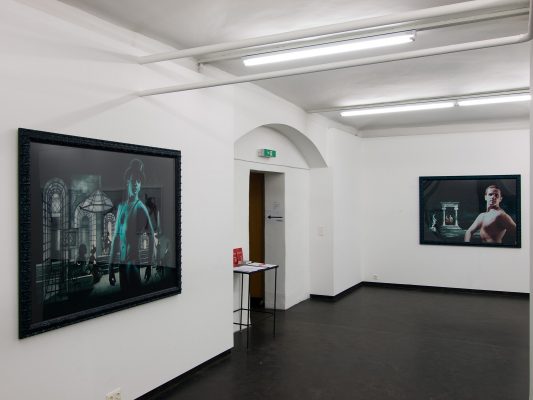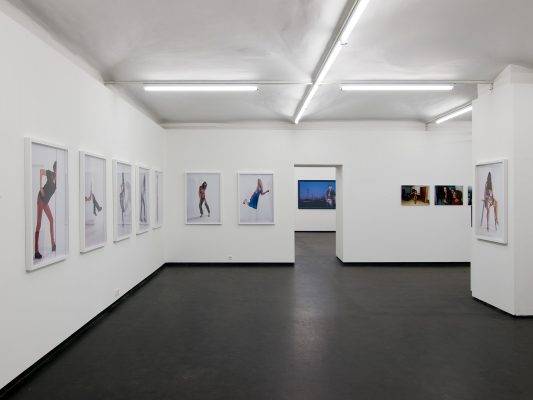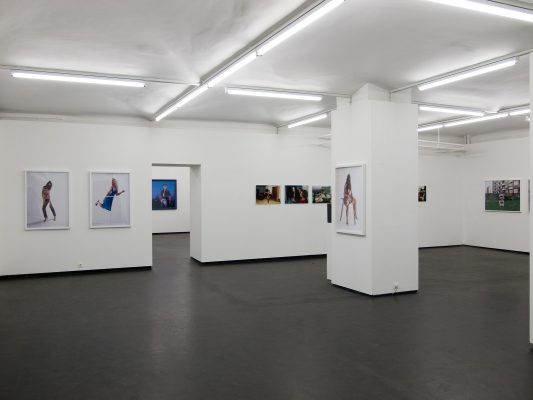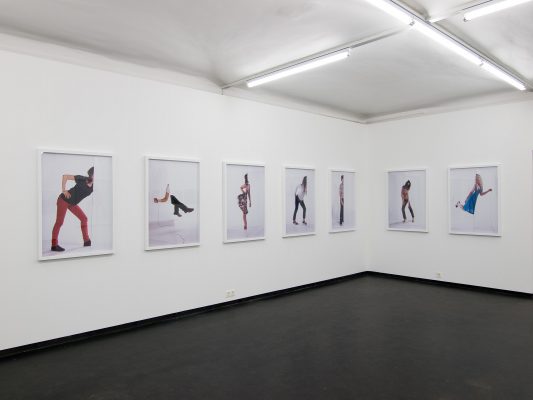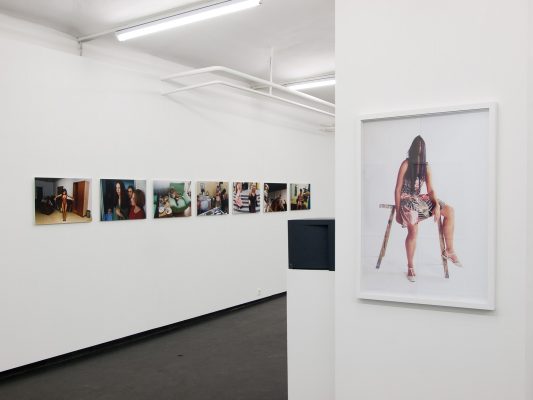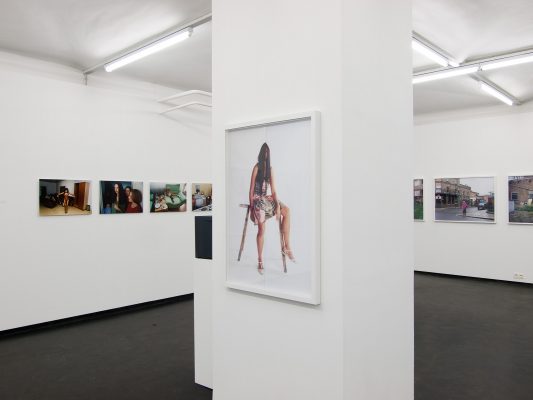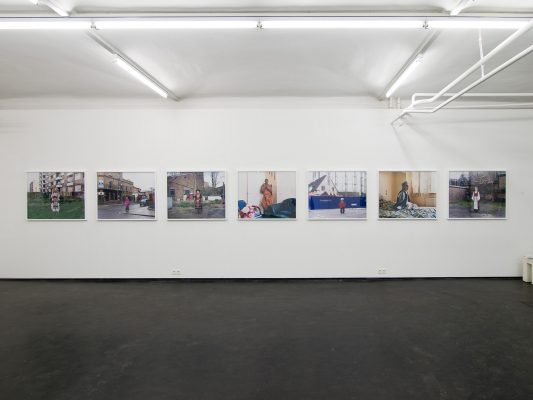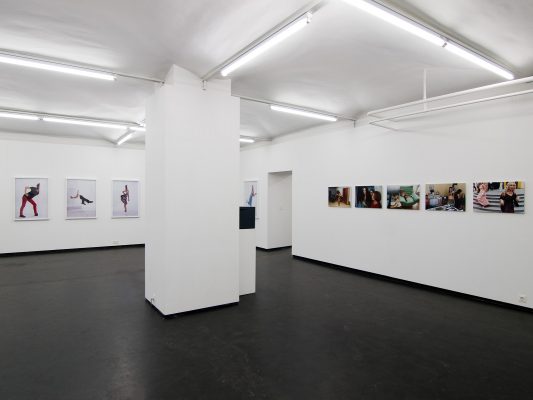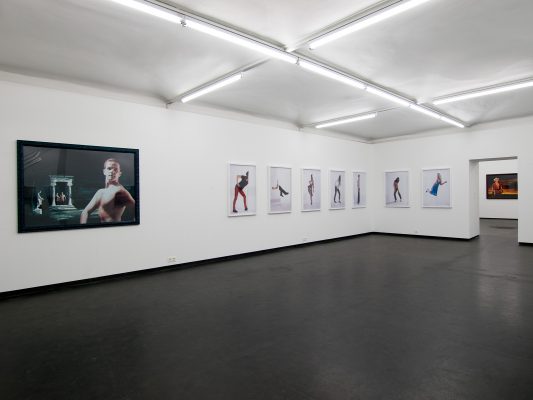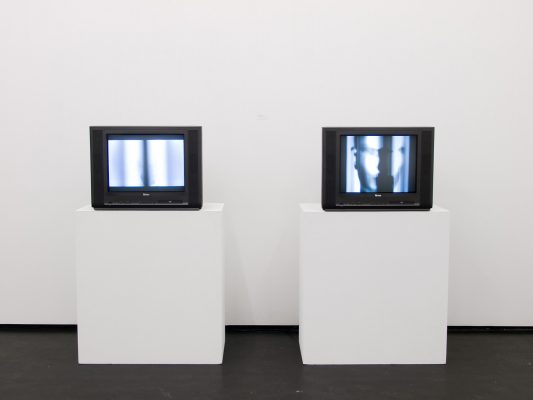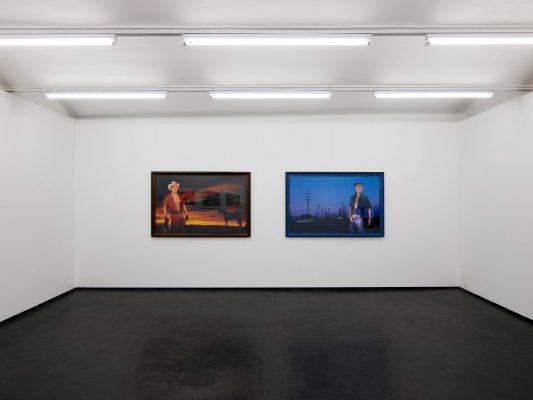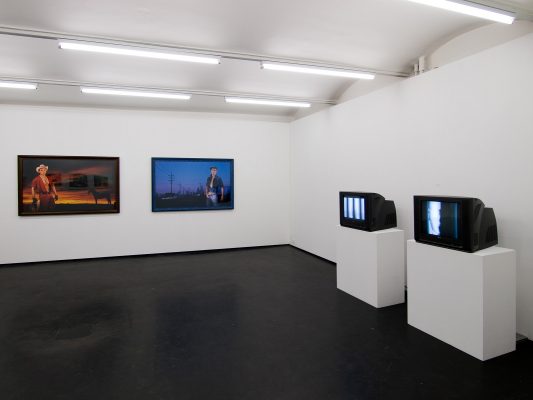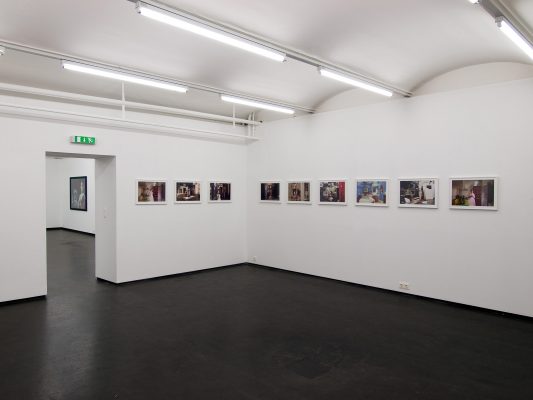Opening: 02. March 2009 @ 7:00PM
The Portrait as mirror image of our society, upon which each individual orients oneself – in which multi-layered exchanges and emotional progressions of complex dispensation mechanisms and adaptation systems flow.
7 artists investigate this social field in its unpredictability dealing with time-contextual and ethnographic classifications and their visual language.
Jerry Galle’s computer-generated visual memory portraits deal with the processing of pictures and their alteration through seeing, storing, recalling and new generation. Just like in the human neural system computers can with specially developed software as poetic machines re-sketch algorithms photographs and sound into abstract language. Therefore in Galle’s experimental video work Portrait each picture is unique.
Caroline Heider’s folding pictures fragment iconographic representation mechanisms of western advertisement or art. The fold breaks open the superficiality of common visual paradigm. It creates space for changed proportions and perceptions, for those societal images, which hide behind its perfect symmetrical aesthetic. Like Models, her protagonists stand in the white cube of the image space – nevertheless large parts of their identity are concealed.
Oleg Kasumovic,s produced and collaged self-portraits are a poetic and at the same time relentless unification and compression – a sort catharsis – from personal life story, artistic biography and personal outing.
The youth in Tito’s Yugoslavia, the longings and/or influences of Hollywood films, the work as stage designers – the photography as mirrors to the self-perception and self reflection in the beauty and transience, as well as sexual orientation and desire are punctuated.
In the video work Roulette Andrea Loux draws an archetypical picture of familiar and social constellations of a society bound by rigid norms. In an increasingly restricting panning of the camera, underlain with partly threatening sound, normality and convention separates into the unknown. Loux decodes interpersonal ambivalences, the suppressed in controlled environments, affections and subliminal aggressions, and the loneliness of the family ritual.
A central topic in Lucia Nimcová,s work are the substantial changes Central and Eastern European societies were subjected to, in the last years accompanied with the disappearance of traditions, with generational conflicts and the loss of quality of life. The photo series Instant Women shines on the everyday life of the women from the middle and lower class. In Nimcova’s more narrative, simpler, nevertheless more precise visual language the discrepancy between desires, dreams and plans of the portrayed and the reality of their surrounding become more obvious.
Laura Ribero’s produced photo series electro domestica takes place in the recording studio of a popular Colombian drama series. It portrays the subject of the desires and cliché-loaded dreams of South American poverty in the pre-produced and designed fairy tale of wealth and luck; she even slips into the role of the house girl and the associated longing of the possible social class change. By the visualization of the settings she unravels the Cinderella topic and deconstructs the illusion.
In Daniel Stier ‘s photo series In my Country migrants in their original garb meet one another in the urban ambience of globalized London. Using traditional clothing as cultural resistance against the loss of their own identity, against the disappearance of the comprehensible, understandable social structures and cultural inheritance. The people, who Steir portrays in their usual surrounding, become part of this modern London – are shaped and embedded with their own history.
